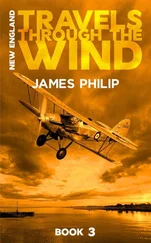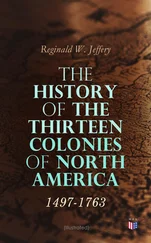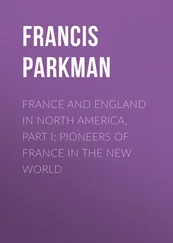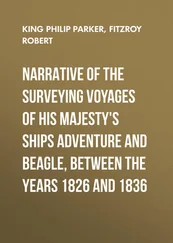Bernhard - Travels Through North America, During the Years 1825 and 1826. v. 1-2
Здесь есть возможность читать онлайн «Bernhard - Travels Through North America, During the Years 1825 and 1826. v. 1-2» — ознакомительный отрывок электронной книги совершенно бесплатно, а после прочтения отрывка купить полную версию. В некоторых случаях можно слушать аудио, скачать через торрент в формате fb2 и присутствует краткое содержание. Жанр: foreign_antique, foreign_prose, Путешествия и география, на английском языке. Описание произведения, (предисловие) а так же отзывы посетителей доступны на портале библиотеки ЛибКат.
- Название:Travels Through North America, During the Years 1825 and 1826. v. 1-2
- Автор:
- Жанр:
- Год:неизвестен
- ISBN:нет данных
- Рейтинг книги:4 / 5. Голосов: 1
-
Избранное:Добавить в избранное
- Отзывы:
-
Ваша оценка:
- 80
- 1
- 2
- 3
- 4
- 5
Travels Through North America, During the Years 1825 and 1826. v. 1-2: краткое содержание, описание и аннотация
Предлагаем к чтению аннотацию, описание, краткое содержание или предисловие (зависит от того, что написал сам автор книги «Travels Through North America, During the Years 1825 and 1826. v. 1-2»). Если вы не нашли необходимую информацию о книге — напишите в комментариях, мы постараемся отыскать её.
Travels Through North America, During the Years 1825 and 1826. v. 1-2 — читать онлайн ознакомительный отрывок
Ниже представлен текст книги, разбитый по страницам. Система сохранения места последней прочитанной страницы, позволяет с удобством читать онлайн бесплатно книгу «Travels Through North America, During the Years 1825 and 1826. v. 1-2», без необходимости каждый раз заново искать на чём Вы остановились. Поставьте закладку, и сможете в любой момент перейти на страницу, на которой закончили чтение.
Интервал:
Закладка:
[Several succeeding days were spent in excursions to different places in the vicinity, in company with the Admiral and Sir John Phillimore; and one day on a water party accompanied by ladies.]
On the 19th of May, in a small boat belonging to the Fortitudo, I made, with great pleasure, an excursion to Trematon Castle, which I had formerly understood was once the residence of the ancient Princes of Cornwall. Sir John Phillimore had been so polite as to inform the proprietor, Mr. Tucker, chief director of the neighbouring mines, whose son is an officer on board the Thetis, of our coming. On landing, we found a carriage sent by Mr. Tucker to meet and convey us to the castle. I observed here a water-mill, behind which was a large walled basin that is filled by the flood tide, and closed by a gate. During the ebb tide the gate is opened and the mill set to work. It reminded me of the bassins de chasse , in some of our harbours.
Trematon Castle is situated upon a height. Besides the walls furnished with loop-holes which form a quadrangle, the castle consists of but two towers, one quadrangular, which forms the entrance, and the other a round one, somewhat higher. As Mr. Tucker holds this castle of the king, the royal arms are over the portal. In the court-yard of the castle, Mr. Tucker has built a tasteful house, and, by removing part of the adjacent wall, has obtained a beautiful prospect from his dwelling, comprising a view of most of the Hamoaze with the shipping, Anthony’s Park, Devonport, and part of Plymouth Sound. Mr. Tucker holds several important posts in the navy, and during Fox’s ministry he was secretary to the admiralty. At the overthrow of that administration, he retired to his native place with a pension of two thousand pounds per annum, and the office of secretary to the duchy of Cornwall; here he is highly esteemed, enjoys great influence, and has his property principally vested in the mines. After receiving us in a very friendly manner, and introducing his family, he took a seat in the carriage.
We went eight miles further to a silver mine, the only one in England. It belongs to a company of five stockholders, of which Mr. Tucker is the principal. The country is very hilly, the road sometimes narrow and steep, so that it was frequently necessary to lock the wheels. A part of the way was over the good road from Saltash to Callington; we also passed near to Pentilhe castle. The land is generally good, with the exception of a heath, of which England contains a number under the name of “commons.” The silver mine is situated in a deep valley of Fulliford common. The mine is named St. Vincent, in honour of the deceased admiral, who was a great patron of Mr. Tucker. The mine has been but five years in progress, and produces so little that it sinks two hundred pounds per month for the stockholders. The vein of silver, whose presence is judged of certainly by iron-stone, is cut at right angles by a vein of copper. This copper they are breaking through in hopes of greater success. The mine has five shafts; the deepest is rather more than three hundred feet deep, and serves as a working-shaft: two others are used for pumping out the water. One pump is worked by a steam-engine of seventy horse-power, the other is worked by a compound lever, which is about a quarter of a mile long, moved by a water-wheel of forty feet in diameter. The wheel is overshot, and the water for working it is obtained from a small brook, aided by the water pumped up by the steam machine, and conducted to it by a small canal. The lever is composed of long wooden beams, bound together with iron straps, and hangs by tripods placed at determinate distances.
The ore raised from the mine, is pounded, washed, and roasted in the usual manner. In order to separate the silver from the ore, the following mixture is added to an ounce of the powder; red lead, two ounces; red tartar, five pennyweights; nitre, nine pennyweights; borax, four pennyweights; lime, one-quarter of an ounce; common salt, two ounces; pounded fluor spar, one-quarter of an ounce. The whole is thrown into a red hot iron crucible, which is placed on a glowing coke fire for five minutes. The crucible is then taken off and the melted mass poured into a ladle, allowed to cool and the dross removed. Some copper still remains in the mass, so that the silver is again smelted with some lead, and poured into a small vessel made of bone ashes: the lead is oxydated and the silver remains pure. An ounce of ore produces one-fourth of an ounce of silver.
The mine is extremely damp, and as I had not felt entirely well for some days, I did not descend, neither did any of the company. We returned to Trematon, and in order to examine the noble spot to which we were going more thoroughly, I mounted the box, and enjoyed a great treat. To the left I looked down a deep valley upon the Tamer; farther off, upon the Hamoaze, and to the right, far over Cornwall. Falmouth is said also to be in sight. In his tastefully arranged house, Mr. Tucker has a very interesting collection of minerals and metals of the vicinity. He possesses a valuable library, and his wife has a remarkable collection of shells. In the quadrangular tower of the castle, he has fitted up a billiard room, and arranged on the walls numerous curiosities: ancient weapons, and implements from the South Sea Islands, the tatoed and dried head of a New Zealand chief, with his dress; pieces of worm-eaten ship-timber from the Indian Ocean, with one of the worms in spirits; Indian weapons; an American tomahawk; a human skull, found thirty feet under ground in Cornwall; a marble bullet, with which an English ship was struck in the Dardanelles, in 1807; articles from the field of Waterloo; and a weeping willow leaf from over Napoleon’s tomb! Above the clock in this tower, is placed the bell of the Spanish ship Salvador del Mundo , taken and burnt by Lord St. Vincent. The round tower, of which only the outward wall is standing, formerly served for a prison. The walls of this tower, as well as all the rest of the castle, are overgrown with ivy. A wooden staircase within, leads to a circular gallery, which affords a beautiful prospect. A narrow passage cut through the walls, leads to the garden, which contains numerous hot houses and a very fine orangery. From this spot Mr. Tucker accompanied us, by a very shady foot-path, back to our boat. I remarked near the Castle of Trematon, as about other English castles, and public walks, a vast flock of rooks, which roost there, making a great filth and noise. The rook is much esteemed, and I hear that the people foster them, and have their eggs hatched under pigeons, as they are thought to destroy vast numbers of injurious insects.
Amid all this friendly, agreeable, and learned society, these entertainments and excursions, my impatience became great, and augmented from day to day, from hour to hour. My time was precious, yet the greater part of it was lost here. I waited with increasing anxiety for the arrival of the Pallas, which still did not appear. More than once I resolved to leave behind all I had on board of the corvette, and go to the United States in a common packet. In the meanwhile various considerations deferred my departure from day to day, until finally on the 30th of May the Pallas arrived.
While waiting for the ship, I derived much pleasure from a visit made with Sir John Phillimore to the country seat of Colonel Ginnis, formerly of the army. He lives in a beautiful park, a charming situation, five miles from Plymouth, not far from the left bank of the Tamer , with five lovely and handsome daughters. His house is very tastefully arranged, and ornamented with paintings by himself. He has a peculiar talent for landscape painting, both in oil and water colours. He has thus preserved representations of the most beautiful situations visited in the course of his numerous journeys. He passed nine years in North America, and showed us views of wonders of nature, which I hope soon to admire myself. His view of the cataract of Niagara, and Falls of Montmorenci, gave me great pleasure.
Читать дальшеИнтервал:
Закладка:
Похожие книги на «Travels Through North America, During the Years 1825 and 1826. v. 1-2»
Представляем Вашему вниманию похожие книги на «Travels Through North America, During the Years 1825 and 1826. v. 1-2» списком для выбора. Мы отобрали схожую по названию и смыслу литературу в надежде предоставить читателям больше вариантов отыскать новые, интересные, ещё непрочитанные произведения.
Обсуждение, отзывы о книге «Travels Through North America, During the Years 1825 and 1826. v. 1-2» и просто собственные мнения читателей. Оставьте ваши комментарии, напишите, что Вы думаете о произведении, его смысле или главных героях. Укажите что конкретно понравилось, а что нет, и почему Вы так считаете.












